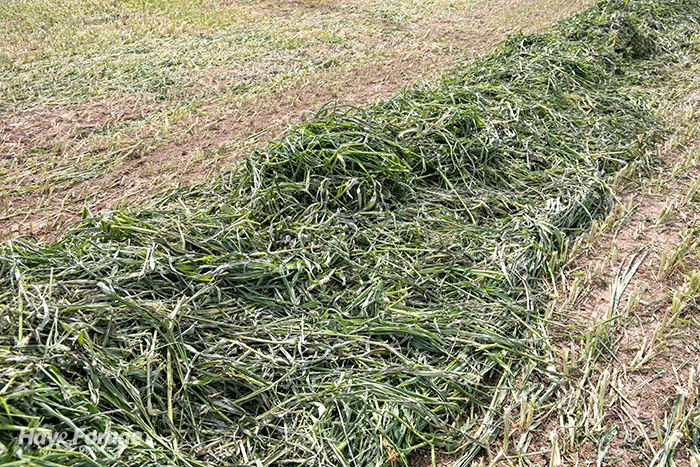
Before you utilize the annual forages you seeded this summer to boost your stored forage supplies or extend the grazing season, consider if these plants could be toxic to livestock. Sorghum, sorghum-sudangrass, and sudangrass all pose a risk of prussic acid poisoning if they are stressed.
In an article from Kansas State University Extension, Sandy Johnson, an extension beef specialist, and John Holman, a cropping systems agronomist, explain that members of the sorghum family contain dhurrin, which is a compound that gets converted to hydrogen cyanide, or prussic acid, when plant cells are damaged. This can occur during drought, frost, or from insect feeding.
Young plant material and forage regrowth can contain higher concentrations of prussic acid, so it is generally recommended to avoid grazing sorghum species until plants are at least 18 inches tall. In the past, it was also accepted that prussic acid dissipates as forage dries down after cutting or a hard frost; however, this may not be entirely true as more recent research shows that drying doesn’t always bring prussic acid down to safe levels.
The extension specialists explain a Kansas State University study in which forage sorghum was cut in early August when plants were 3 to 4 feet tall. Except for some rain following the harvest, conditions turned dry through the fall and winter. Since drought stress contributes to prussic acid production, and forage regrowth contains higher concentrations, the stand was suspected to be highly toxic.
Researchers collected a forage sample from the field in October, chopped it, and then divided it into 18 subsamples. One subsample was analyzed immediately, while the others were tested periodically over the next several months. By the end of the study, none of the forage improved to safe feeding levels; in fact, the last sample tested in April still contained lethal levels of prussic acid.
In addition to analyzing the rate of dissipation after drying, researchers also sampled standing forage from the same field in November, December, and January. “Prussic acid levels decreased over time in the field more than the samples stored at room temperature, but samples in the field were still at a level to cause toxicity,” the specialists state.
Test it
So, how can farmers avoid feeding toxic sorghum? The first step is to be aware of conditions that cause prussic acid concentrations to spike, such as during drought or after a frost. Sample young plants or regrowth for prussic acid prior to harvest, and then test forage again prior to feeding.
A dhurrin-free forage sorghum variety has been identified by researchers at Purdue University, but the extension specialists note that this genetic material is only licensed to one seed company — S&W Seeds — and that company is currently liquidating, which could slow its availability to farmers. Even so, they add that dhurrin-free sorghum has been successful in several field trials and it seems to be highly palatable to cattle and sheep.
Another option to prevent prussic acid poisoning is to harvest sorghum species as silage instead of making hay or grazing them. Shelby Gruss, the state forage specialist at Iowa State University, says chopping initiates the breakdown of dhurrin into prussic acid and the fermentation process may allow for better dissipation of the toxin compared to drying. Moreover, Gruss adds that livestock cannot select for young plant material that could be high in prussic acid when they are fed silage like they might try to do in a grazing system.

